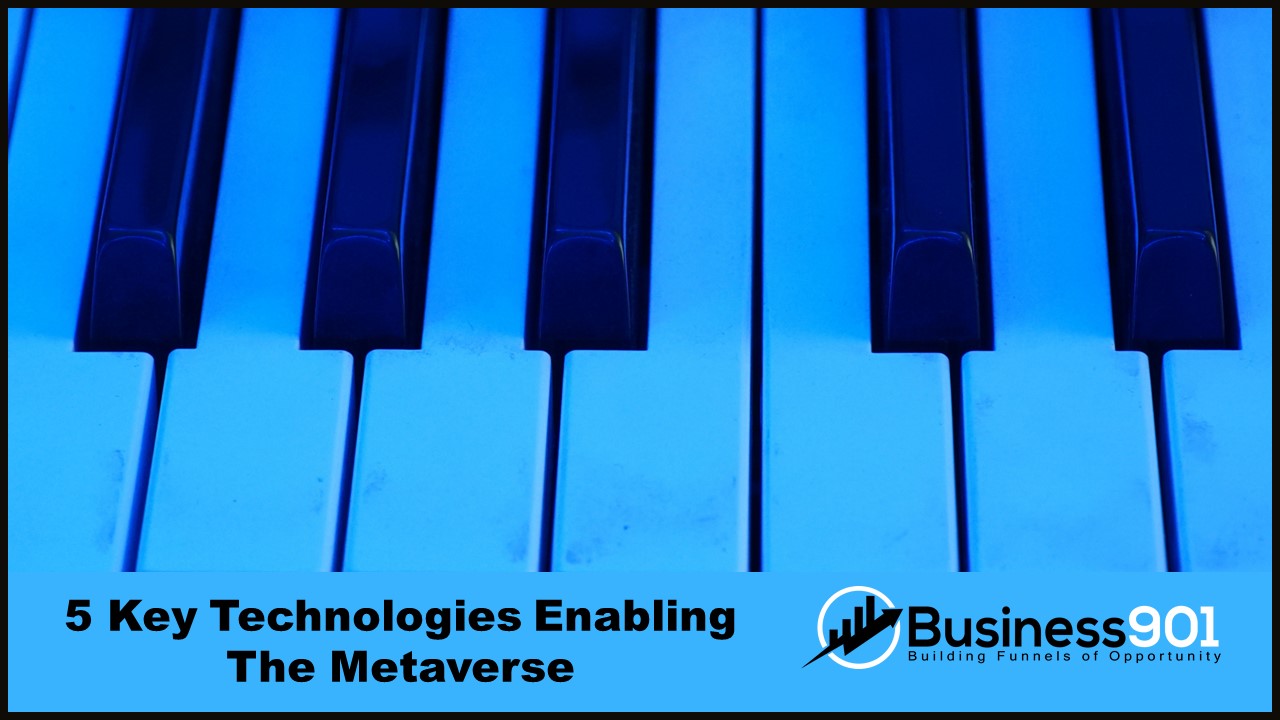Are you ready?
- Most services being delivered over the internet.
- A public ledger of all transactions in chronological order.
- The ability of computers to process information and make decisions based on programmed rules.
- Ability to immerse yourself in a computer-generated artificial world.
- The blending of artificial computer images with real life.
- Robots perform various tasks.
- Devices on your body that can assist with tasks or monitor your health.
5 Key Technologies Enabling The Metaverse
1. Internet of things (IoT): The Internet of Things (IoT) is an intelligent network of physical objects or devices, vehicles, home appliances, and other items embedded with electronics, software, sensors, and network connectivity, which enables these objects to collect and exchange data. By 2021, it is estimated that there will be over 31 billion IoT devices worldwide. With so many devices connected to the internet, it is essential to ensure that they are secure from cyber-attacks.
2. Blockchain and cryptocurrency: A blockchain is a public ledger of all cryptocurrency transactions, programmed to record data in batches called “blocks” and linked to each one before it. It takes the form of a distributed network of millions of computers worldwide. The record cannot be altered retroactively without the alteration of all subsequent blocks, which requires the collusion of the network majority. Cryptocurrencies (or crypto assets) are digital currencies that use cryptography to secure their transactions and control the creation of new units.
3. Artificial intelligence (AI): Artificial intelligence (AI) is the intelligence displayed by machines, in contrast to the natural intelligence displayed by humans and other animals. AI covers many subfields, including machine learning, expert systems, natural language processing, computer vision, and robotics. AI has been used in various fields, including medicine, finance, manufacturing, and even the arts. In medicine, AI is used to diagnose and treat patients and design new drugs and therapies. In finance, AI is developing new investment strategies and automating financial processes. In manufacturing, AI is used to improve production efficiency and create new and innovative products.
4. Augmented Reality (AR) and Virtual Reality (VR): Augmented Reality displays a view of a physical, real-world environment whose elements are augmented (or supplemented) by computer-generated perceptual information. It adds computer-generated aspects to a person’s view of the real world. It takes the form of eyeglasses, visors, or other devices worn above or near the eyes. This technology allows users to see a real-world environment with virtual objects superimposed onto it. For example, a user might see a virtual map overlaid on their view of the real world or virtual objects superimposed on real-world objects. On the other hand, virtual reality creates a simulated, computer-generated, interactive environment where the person immersed experiences a simulation of the real world. It takes the form of headsets that fit over the eyes or an immersion suit that covers the body.
5. 3D reconstruction: 3D reconstruction is how you can reconstruct the 3D shape of an object or a 3D scene by taking photos from multiple angles. It is the same as a 3D scan, but with the addition of more data points to create a more accurate representation of the object or scene. This process can be used to create a 3D model of an object or location in CAD or other 3D applications. The metaverse will run on the same graphical engines that drive today’s video games but with the added processing power required to generate virtual worlds populated with millions of realistic avatars. As VR headsets become more widely adopted, VR will become the primary way people experience the metaverse, with standard 2D monitors functioning as an option for people who have difficulty navigating VR environments. Haptics will provide a more realistic experience for avatars, especially in VR environments. Real sound will be as important as graphics in creating immersive VR environments.
Wrapping Up
As with new technology, there are a few barriers to entry. However, all of these are expected to fall over time, making the metaverse more accessible to people worldwide.
Sources:
Complete Guide to Pilot Implementation Strategy – Welp Magazine. https://welpmagazine.com/complete-guide-to-pilot-implementation-strategy/
EnterNet – Exploring the Internet of Things. https://www.etc.cmu.edu/projects/enternet/
Is the IoT Really Improving Productivity? – New Era Technology US. https://www.neweratech.com/us/blog/is-the-iot-really-improving-productivity/
Augmented Reality (AR) and Virtual Reality (VR). https://talentjourney.si/course/augmented-reality-ar-and-virtual-reality-vr/
Artificial Intelligence & Machine Learning. https://www.youweagency.com/data-intelligence/artificial-intelligence-machine-learning

